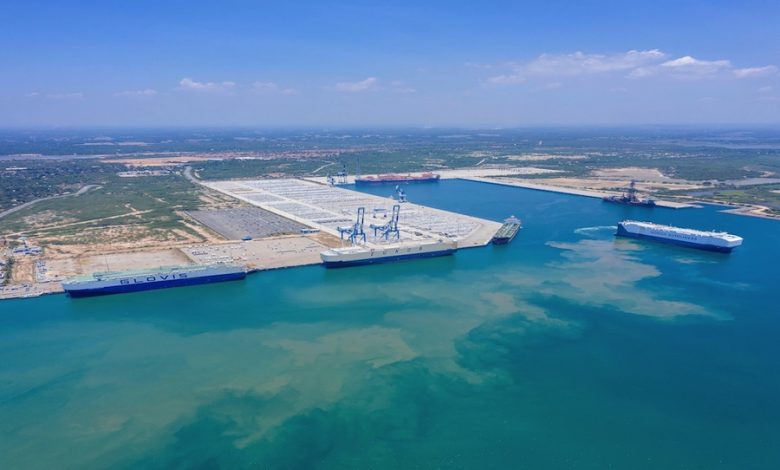China’s Belt Road Initiative – consolidation or dislocation?

There has been ongoing commentary that China’s BRI is about to collapse as it was ill conceived and planned. After predictions of the BRI collapse in 2018 failing to materialise, there is now a new school of thought that argues that the BRI will collapse soon as it is ill conceived, in particular claiming it is a distraction from the crisis currently besetting China – this crisis being one of overcapacity. Supporting this notion has been recent reports in a leading maritime magazine, that recently ran the story that the land based ‘belt’ will not be able to compete with the maritime ‘road’ and that there needs to be dose of reality in what the rail connectivity can do.
When reading these and other narratives, many still do not understand a key and central theme of the BRI. Contrary to being ad hoc and reactive, it ignores that the BRI is part of China’s One Hundred Year plan that commenced in 1948, in which Chinese pride and global economic prominence will be returned. This is to return China’s trade status to that found under the old Silk Road. The plan is fluid in that it will adapt to changing geopolitical conditions, but it has a clear focus as to what is to be achieved. More importantly, the belt and road elements of the plan are not competing forces but are complementary in that it is a strategic pairing of ports with rail networks that connects markets. Whilst rail may not surpass marine-based logistics, it will change the shape of logistics and supply chain, transport of high value and perishable commodities.
Developments in 2019 demonstrate the complementary nature of logistics / transport corridors. If these developments are seen in isolation, then they do appear to be ad hoc. If seen as being complementary within the BRI, a whole new picture emerges. With 197 BRI co-operation agreements in 137 countries now in place, the three pillars of the BRI are being addressed simultaneously. These pillars are the rail and ports strategy and ecosystem in which they operate i.e. the economy.
There have been several rail network developments. Examples include: China – Laos, China Thailand, Jakarta Bundung High Speed and Hungary – Serbia line. The Hungary – Serbia line is part of the EU, TEN-t rail network connecting central Europe, connecting Budapest with Belgrade. Container sea-rail transport at Ningbo- Zhoushan Port has increased by 33%, mainly due to 17 sea-rail routes being opened, importantly incorporating cold chain. This network now ships more than 800,000 teu. This is important as China’s industry moves increasingly away from the coast.
In terms of complementary ports, progress has been made in Hambantota (Sri Lanka), Gwadar (Pakistan), Piraeus (Greece) and Khalifa. China has invested $11bn into ports, now having a footprint in 25 ports and 18 container terminals. Furthermore, COSCO is involved in 55 terminals. Investments in Piraeus have seen cargo volumes rise by 75% since 2013. Furthermore, the Vado Gateway port in Italy has now increased capacity to 900,000 teu.
In order to facilitate this new paradigm, China has introduced several economic measures. These economic measures are in line with the planned expansion into third party markets and participation. Several special economic / industrial zones have been agreed, such as China-Belarus Industrial Zone as well as China-UAE and China-Suez economic zones. Bilateral currency agreements with 20 BRI participating nations, with seven RMB clearing arrangements now in place in seven countries. Within China, six new Free Trade Zones will be established with land and seaport borders, while a further 24 e-commerce zones to be established. China’s new foreign investment law that commenced on 1 January 2020 opens foreign company participation in BRI procurement projects.
What has been the impact of this supposed ad hoc development on logistics and supply chain?
From a trade perspective, trade within the BRI network, is now $950bn, with a further $10bn in non-financial exchanges. There has also been extensive investment in the region’s BRI projects since 2013, with Western interests outspending China by $5bn. Ironically, only three of the BRI participant countries have China as their largest fund source. Importantly, China is expecting to increase its imports to $10trn over the next five years.
Furthermore, the new infrastructure has seen block train trips reaching 8,225 in 2019, facilitating the movement of 725,000 teu along the China-Europe trade corridor. This is a significant increase over 2018, some 36%, with the target of 1m teu by the end of 2020 firmly set in their eyesight. With the change in subsidy policy, there has been an improvement in container optimisation. Westbound loaded trains now reported at 98% full, whilst eastbound loaded trains are at 82% full. Furthermore, there has been a narrowing of the number of west and eastbound trains. Unlike previous years, westbound trains account for 57% of the train volume, with 43% being eastbound. This is mainly due to increasing consumer demand for higher valued product by Chinese consumers.
Whilst there are issues that remain to be resolved, such as digital connectivity and integration, the BRI continues to show momentum. The World Bank has concluded that the BRI can reduce travel time along these economic corridors by 12 %, increase trade by 9.7% and incomes by 3.4%. It stands to reason that those in shipping, logistics and supply chain cannot afford to ignore these developments being made by the world’s second largest economy.
